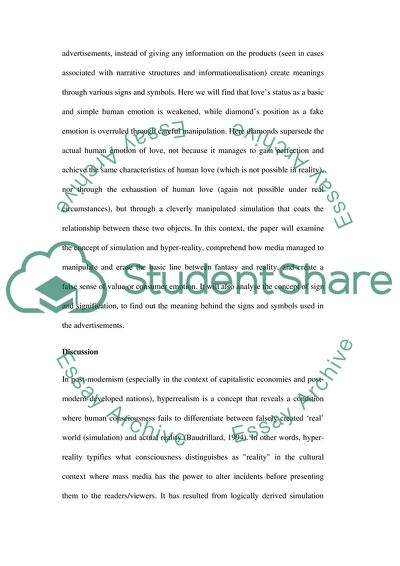Cite this document
(DeBeers Advertising Case Study Example | Topics and Well Written Essays - 2250 words, n.d.)
DeBeers Advertising Case Study Example | Topics and Well Written Essays - 2250 words. https://studentshare.org/media/1771953-a-diamond-is-forever-an-analysis-of-how-a-single-phrase-redefined-the-value-and-perception-of-diamonds-through-simulation-and-hyper-reality-in-debeers-advertising-case
DeBeers Advertising Case Study Example | Topics and Well Written Essays - 2250 words. https://studentshare.org/media/1771953-a-diamond-is-forever-an-analysis-of-how-a-single-phrase-redefined-the-value-and-perception-of-diamonds-through-simulation-and-hyper-reality-in-debeers-advertising-case
(DeBeers Advertising Case Study Example | Topics and Well Written Essays - 2250 Words)
DeBeers Advertising Case Study Example | Topics and Well Written Essays - 2250 Words. https://studentshare.org/media/1771953-a-diamond-is-forever-an-analysis-of-how-a-single-phrase-redefined-the-value-and-perception-of-diamonds-through-simulation-and-hyper-reality-in-debeers-advertising-case.
DeBeers Advertising Case Study Example | Topics and Well Written Essays - 2250 Words. https://studentshare.org/media/1771953-a-diamond-is-forever-an-analysis-of-how-a-single-phrase-redefined-the-value-and-perception-of-diamonds-through-simulation-and-hyper-reality-in-debeers-advertising-case.
“DeBeers Advertising Case Study Example | Topics and Well Written Essays - 2250 Words”. https://studentshare.org/media/1771953-a-diamond-is-forever-an-analysis-of-how-a-single-phrase-redefined-the-value-and-perception-of-diamonds-through-simulation-and-hyper-reality-in-debeers-advertising-case.


